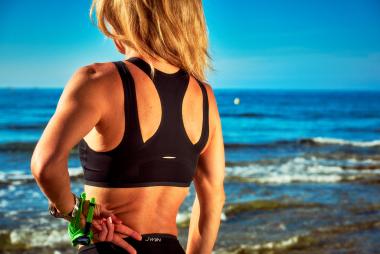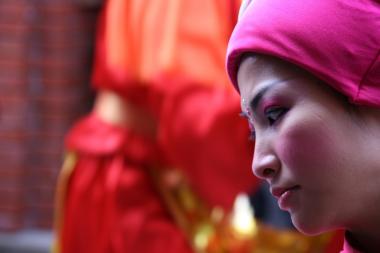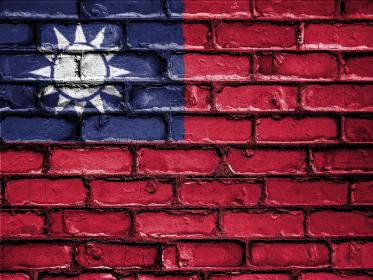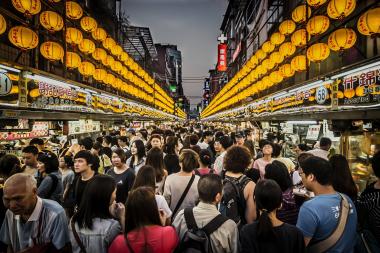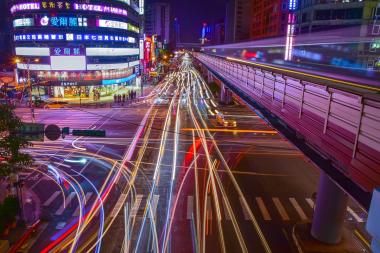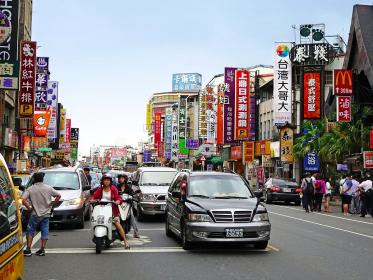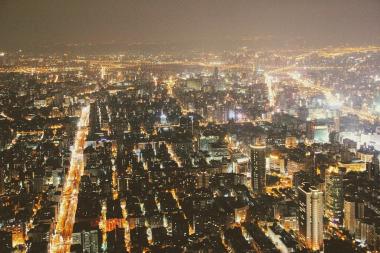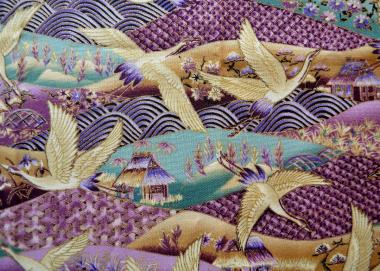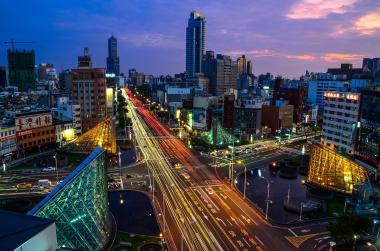Innovative sportswear: Swim and run without changing
Just in time for summer: The Swiss start-up Swijin is launching a new sportswear category with its SwimRunner – a sports bra together with matching bottoms that works as both swimwear and running gear and dries in no time. The innovative product was developed together with Empa researchers in an Innosuisse project. The SwimRunner can be tested this weekend at the Zurich City Triathlon.
A quick dip after jogging without having to change clothes? Swijin (pronounced Swie-Djin), a new Swiss TechTex start-up, is launching its first product, the SwimRunner: a sports bra and bottoms that function as both swimwear and running gear and dry in a flash.
For the first time, this innovation enables women to make a smooth transition between land and water sports without having to change clothes. For example, hikers and runners can easily go into the water to cool off. Stand-up paddlers wearing the SwimRunner enjoy unrestricted freedom of movement and at the same time sufficient support, both on the board and in the water.
Science to boost sports performance
What appears to be a relatively simple requirement at first glance has turned out to be an extremely complex product to develop. As part of an Innosuisse project, Swijin collaborated with the Empa Biomimetic Membranes and Textiles laboratory in St. Gallen. Led by Empa engineer Martin Camenzind, the researchers first defined the requirements for the material and cut of the sports bra. "During development, we faced three main challenges: On the one hand, the product had to meet the requirements of a heavy-duty sports bra on land. At the same time, it had to maintain the compression of a swimsuit in the water – and do so with a very short drying time," says Camenzind.
Since no comparable garment exists on the market yet, the team also developed new tests for evaluating the high-performance textile. "Moreover, we designed a mannequin: a model of the female torso that can be used to measure the mechanical properties of bras," explains the researcher. In addition to scientific findings, the product development process also incorporated a great deal of expertise from sports physiologists, textile engineers, industry specialists, designers and, of course, female athletes.
Highest demands
Many of these athletes come from the swimrun scene. Swimrun is a fast-growing adventure sport that originated in the skerry gardens of Sweden. Unlike triathletes, who start out by swimming, then bike, and finally run, swimrunners switch back and forth between trail running and open water swimming throughout the race. The intensity of this sport provided Swijin with the optimal conditions for product development – and gave its name to the first collection, SwimRunner. "The feedback from female athletes was one of the deciding factors for the success of the product. They often swim and run for six to seven hours at a stretch. When they were satisfied with our prototypes, we knew: The SwimRunner is ready for market," says Swijin founder Claudia Glass.
The product idea first came to Claudia Glass while she was on vacation on Mallorca. During her morning runs, she longed to be able to take a quick dip in the sea. "Sports bras, however, are not designed for swimming," the founder explains. "They soak up the water and never seem to dry because of their thick compression material. Last summer, I wore the SwimRunner prototype all day. In the morning, I ran to Lake Zurich with my dog and jumped in. When I got back home, I could have just sat down at my desk and started working – I was completely dry and felt very comfortable."
Design and sustainability
The young company makes a point of combining engineering and design. Swijin's creative director, Valeria Cereda, is based in the center of the world's fashion capital, Milan, and infuses her experience with luxury brands into Swijin's aesthetic. But as a former competitive swimmer, she is also focused on functionality.
Swijin's high-performance products can only be realized with synthetic materials. The young company is determined to reduce the environmental impact of its products to a minimum. The tight supply chain keeps the CO2 footprint low. The materials of the SwimRunner are 100% made in the EU and designed for quality.
Traditional garment labels only provide information about where the garment was made. Swijin is working with supplier Avery Dennison to provide all products with a Digital Identity Label. This gives consumers detailed information about the entire value chain, right down to the textile manufacturer's investment in reducing its carbon footprint and the use of the water-based, solvent-free logo. Swijin packages all materials in Cradle-to-Cradle Gold certified packaging, which is produced by Voegeli AG in Emmental.
Furthermore, Swijin proactively addresses the challenges at the end of the product life cycle. In order to come one step closer to a truly circular economy for functional textiles, Swijin participates in the Yarn-to-Yarn® pilot project of Rheiazymes AG as a lighthouse partner. This biotech solution uses microorganisms and enzymes to generate new starting materials directly from used textiles in a climate-neutral way. When customers return end-of-life Swijin products – for which the company offers incentives – the high-quality monomers can be returned to the supply chain in their original quality: true circularity.
"As an emerging brand, we have both the obligation and the luxury of choosing partners whose vision and values align with our own," says Claudia Glass. "I had a clear understanding of what kind of brand I would buy, but I couldn't find it anywhere. With Swijin, we feel obligated to actually make our values a reality."
Claudia Glass, Anna Ettlin, EMPA


